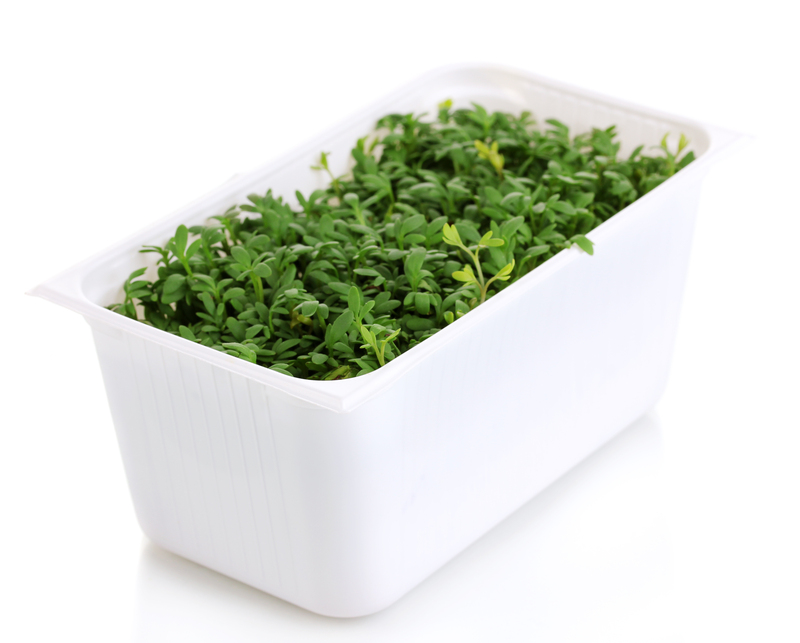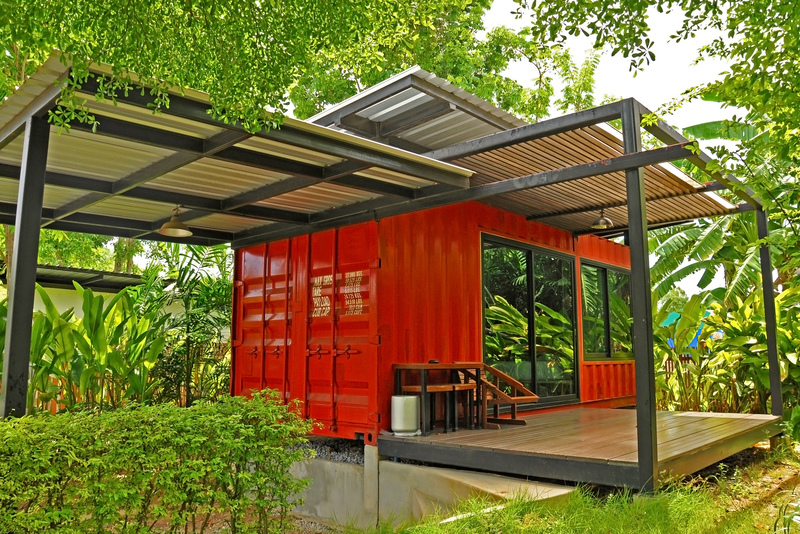Simple Steps to Properly Recycle Your Pots and Pans
If you've recently upgraded your cookware or found that your old pots and pans are no longer serviceable, you might be wondering what to do with them. Instead of sending them straight to a landfill, recycling your cookware is an excellent way to protect the environment. In this comprehensive guide, we'll walk you through the simple steps to properly recycle pots and pans, ensuring you make the most eco-friendly choice.
Why Should You Recycle Old Pots and Pans?
Many people don't realize the significant impact that recycling old cookware can have. Pots and pans are typically made from valuable metals such as stainless steel, aluminum, copper, and sometimes iron. These materials can be recovered and used to manufacture new products, saving natural resources and reducing landfill waste.
- Conserve natural resources: Recycling metal reduces the need for new raw material extraction.
- Minimize landfill waste: Keeping non-biodegradable items like metal cookware out of landfills helps reduce environmental pollution.
- Support the circular economy: By giving your pots and pans a second life, you're promoting sustainable consumption and production.

How to Determine If Your Cookware Is Recyclable
Before learning how to recycle used pots and pans, it's essential to know whether your cookware is actually recyclable. Most pots and pans are made of metals, but coatings, handles, and other parts can complicate recycling. Here's what you should look for:
- Material: Is it stainless steel, cast iron, aluminum, or copper? These are generally recyclable.
- Non-stick coating: Cookware with Teflon or ceramic coatings often requires special handling.
- Handles and lids: Rubber, plastic, or wood handles and glass lids may need to be separated.
Tip:
If you're unsure about your pot or pan's material or coating, check the manufacturer's website or contact your local recycling center for guidance.
Simple Steps to Properly Recycle Pots and Pans
Step 1: Assess Reusability
Before jumping into recycling, consider whether your old pots and pans can be reused or repurposed. Sometimes, cookware that seems unusable for cooking can serve other purposes, such as storage containers, planters, or as decorative pieces.
- Donate: If your pots and pans are in reasonable condition, local charities, thrift shops, or shelters may welcome them.
- Swap or give away: Neighborhood groups and online marketplaces like Freecycle or Facebook Marketplace are excellent resources for finding someone in need of cookware.
- Upcycle: Turn an old pot into a flowerpot or garden decoration. Get creative!
Step 2: Prepare the Cookware for Recycling
Once you've determined that recycling your cookware is the best option, it's time to prepare it. Proper preparation ensures the recycling process goes smoothly.
- Remove any non-metal parts: This includes plastic or wooden handles and knobs. Some recycling centers may accept small amounts of non-metal, but it's best to check their requirements.
- Clean thoroughly: Scrub off any food residues, grease, or burnt material. Clean cookware is more suitable for recycling facilities.
- Separate materials: If your pan or pot has a glass lid or combined materials, separate them so that metal can be recycled efficiently.
Step 3: Identify the Right Recycling Method
Knowing where and how to recycle your old pots and pans depends on the type of metal and local recycling programs. Here are common ways to recycle your cookware:
- Scrap metal recycling centers: Most metal recycling facilities will accept metal pots and pans, whether they're made of aluminum, copper, cast iron, or stainless steel.
- Curbside recycling: Some municipal programs accept metal kitchenware, but many do not. Always check your local guidelines.
- Specialized recycling programs: Certain brands offer take-back or recycling programs for their products.
Finding a Local Scrap Metal Recycler
Your best bet for recycling old pots and pans is usually a local scrap metal recycling center.
- Search online for "metal recycling near me."
- Call ahead to confirm that they accept cookware and inquire if non-metal parts need to be removed.
- Ask if there's any monetary compensation for bringing in metal cookware (some centers pay for scrap metal by weight).
Recycling Non-Stick and Teflon-Coated Cookware
Non-stick pans, especially those with Teflon or ceramic coatings, require special handling. The coating cannot usually be melted down with other metals and may emit hazardous fumes if processed incorrectly.
- Contact the manufacturer: Some companies offer recycling for coated products.
- Look for specialized facilities: Search for recycling centers equipped to handle non-stick surfaces.
- Avoid landfill when possible: Non-stick coatings don't decompose and can harm the environment if thrown away.
Tip: If recycling is not feasible, upcycling non-stick pans as trays, organizers, or crafts is a sustainable alternative.
What to Do With Cast Iron Cookware
Recycling cast iron cookware is straightforward, as cast iron is highly valuable in the recycling process.
- Scrap metal yard: Bring your cast iron pieces to a local yard or drop-off center. They're usually accepted with or without minor rust.
- Refurbish: Cast iron is incredibly durable. It may be possible to restore and re-season the pan, giving it new life before resorting to recycling.
Properly Recycling Stainless Steel Pots and Aluminum Pans
Most stainless steel pots and pans as well as aluminum cookware are accepted at scrap metal facilities. Remove plastic handles or other non-metal parts first. Some areas have designated collection points for aluminum cookware, so check your local regulations.
Can You Recycle Glass Lids?
Glass lids, which often come with pots and pans, cannot be recycled with regular glass because they are made from tempered glass. Here's what you can do:
- Contact your local recycling center: Ask if they accept tempered glass separately.
- Repurpose: Use old lids as serving trays, trivets, or garden decor.
Alternatives to Recycling Pots and Pans
If for any reason you can't recycle your cookware, try these alternatives:
- Donation: Local shelters, soup kitchens, or thrift stores may accept functional pots and pans.
- Craft projects: Transform an old pan into a clock, bird feeder, or piece of art.
- Community groups: See if neighbors, artists, or schools have a use for old cookware.
Environmental Benefits of Recycling Cookware
Recycling your pots and pans is more than just a responsible act--it plays an important role in reducing our environmental impact:
- Reduces mining and raw material extraction, preserving natural landscapes and biodiversity.
- Cuts down on energy usage: Producing recycled metal takes significantly less energy than mining and refining new metals.
- Lowers greenhouse gas emissions: Metal recycling emits fewer pollutants and greenhouse gases compared to manufacturing new metal products.
Interesting Fact:
Recycling one ton of steel saves about 2,500 pounds of iron ore and reduces air pollution by 86% compared to making steel from raw materials!
Key Tips for Making Your Cookware Last Longer
While recycling pots and pans is important, the greenest solution is to extend their lifespan. Here's how:
- Use proper cleaning methods: Avoid harsh abrasives to keep surfaces intact.
- Re-season cast iron regularly: Prevents rust and maintains non-stick qualities.
- Avoid overheating non-stick pans: Preserves the coating for longer use.
Frequently Asked Questions About Recycled Pots and Pans
Can I recycle pots and pans in my curbside bin?
Most municipal recycling programs do not accept pots and pans in curbside bins, but local drop-off centers and scrap yards often do. Always check your local recycling guidelines.
Is it okay to recycle cookware with broken handles?
Yes, but it's best to remove all non-metal parts before recycling as this helps processing and ensures the highest recycling quality.
Can you recycle non-stick pans?
Recycling non-stick pans is more challenging due to the Teflon or ceramic coating. Look for specialized handling facilities or contact the manufacturer for take-back programs.
What is upcycling, and how can I upcycle old cookware?
Upcycling means creatively reusing old items instead of discarding them. For example, use an old pan as a plant pot, bird feeder, tool holder, or in craft projects. The possibilities are endless and eco-friendly!

The Bottom Line: Take Action Today
Recycling pots and pans is a small step that yields big environmental benefits. Whether you donate, recycle, or upcycle, you are making a conscious effort to reduce waste and save resources. Use these simple steps to properly recycle your pots and pans and inspire others to make sustainable choices as well.
Recap of the Simple Steps:
- Assess reusability or donation options before recycling.
- Prepare the cookware: Remove non-metals and clean thoroughly.
- Find the right recycling method: Scrap metal recyclers are optimal.
- Handle non-stick and coated cookware with care, using specialized recycling solutions if needed.
- Explore upcycling ideas for added sustainability.
Conclusion
Properly disposing of old kitchenware doesn't have to be complicated. With a bit of effort and creativity, you can recycle used pots and pans responsibly, helping to protect the planet for future generations. Share this guide with your friends and family so that everyone can play a part in creating a cleaner, greener world!
If you have additional tips or unique upcycling ideas for old cookware, share them in the comments section below!